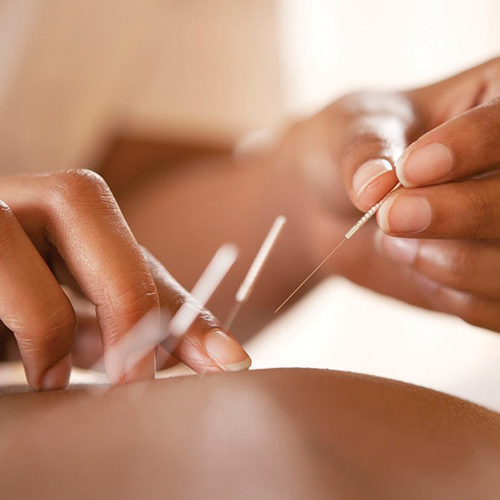
When to use each technique and what is the difference?
What is it?
"Acupuncture" is a traditional Chinese needling technique in which small needles are inject- ed into superficial points that are along specific pathways known as "meridians". The tech- nique aims to improve the ener- getic flow (Chi) through the stim- ulation of these points. Acu- puncture also stimulates the re- lease of multiple substances such as hormones, endorphins, and neuropeptides, which can help with pain management, anti-inflammatory and stress relief. response, "Dry Needling" is a "Western Medicine" needling tech- nique in which one or more small needles are injected into the muscle to prick trig- ger points, release stiff areas of the muscle, and improve blood circulation in both muscle and surrounding tis- sues.
When to go for this technique?
Acupuncture is used general- ly for systemic improvements as it has an effect on the body as a whole. It is also used for functional improve- ment of specific organs or the nervous system (parasym- pathetic). In addition, it is used to relieve the pain and discomfort associated with several diseases and conditions such as:
* Migraine/headaches
* Muscle aches
* Stress/anxiety
* Chronic digestive issues
* Joint pain/arthritis
* Chronic pain
Dry needling is used specifi- cally to release tight muscle as it affects only the needled muscle or the connective tissue. It also aims to restore mobility. The technique can be used in cases such as:
* Muscle stiffness
* Trigger points
* Joint pain
* Joint Range of motion limitations
* Acute injuries (such as muscle strains)
* Scars
How the needling process goes?
Acupuncture:
Needles are injected into multiple points all over the body (from head to toe), the patient usually does not feel any pain when the needles are inserted. The needles are then usually left in for 15-30 minutes, in some specific acu- puncture techniques, points are stimulated for days. Elec- tro-stimulation can also be used to enhance the effect of the needle.
Dry Needling:
Needle(s) is injected into a specific muscle after the ther- apist's assessment and palpa- tion of trigger points. Usually, it is accompanied by a feel- ing of deep ache/muscle twitch, especially when the needle hits the trigger point. Electric stimulation is also used to improve the blood flow and the soreness de- creases after the needling. Needles are usually left in for 3-6 minutes.